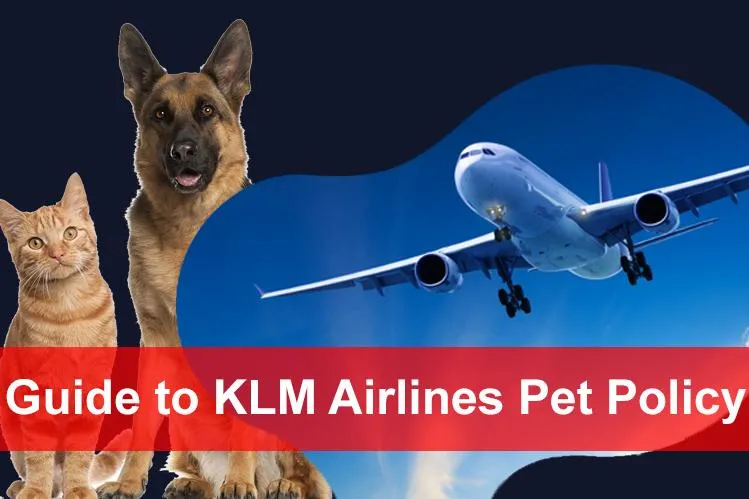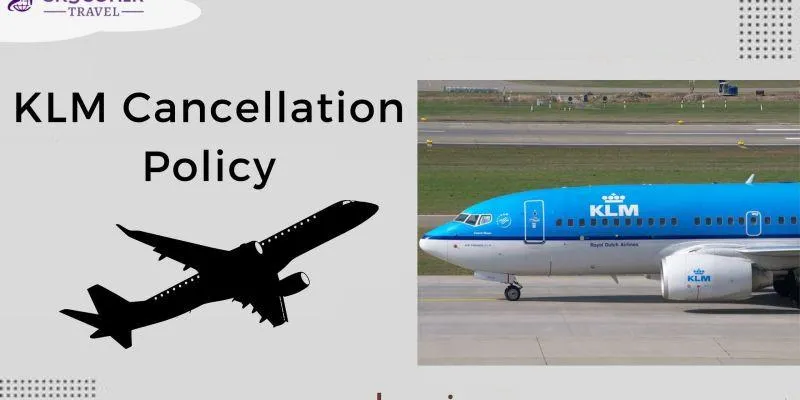A Comprehensive Guide to Traveling with Service Animals on KLM Flights
Whether you rely on your service animal for disability-related assistance or simply enjoy flying with your furry companion, traveling by air with a non-pet animal on KLM can seem intimidating due to various rules and regulations. As an individual with disability experience traveling with assistance animals, I’ve faced my share of complications over the years. In this article, I’ll break down everything you need to know about KLM’s pet and service animal policies to help make your flying experience as stress-free as possible.
Service vs. Emotional Support vs. Pet Animals
The first important distinction to understand is the difference between service animals, emotional support animals, and pets. Service animals are specially trained to perform tasks for people with disabilities, like guiding someone who is blind, alerting to seizures, or assisting with balance and stability. Under the Air Carrier Access Act, service dogs must be allowed to accompany their handler in the cabin at no charge. Emotional support animals, on the other hand, provide comfort just by being with a person but are not trained to perform specific work or tasks. While emotional support animals may be permitted in the cabin of U.S. flights under certain conditions, they are treated as pets by foreign carriers like KLM and are not eligible to fly in the cabin for free.
All other animals are considered pets that need to be properly contained in a kennel and booked as excess baggage cargo according to IATA guidelines. So if you’re traveling with Fido just for companionship rather than disability mitigation, he’ll need to fly as a Pet in the cargo hold, not with you in the cabin.
KLM’s Service Animal Policy
KLM generally follows the guidelines of the International Air Transport Association (IATA) and considers trained service dogs that assist passengers with disabilities as an exception to its no pets in cabin policy. But some key things to note about KLM’s service animal rules, based on my past experiences:
- You must provide a letter from your medical professional stating your need for the animal at least 48 hours before your flight.
- Only dogs are permitted as service animals—no other species.
- The animal must remain on the floor at your feet or on your lap for the entire flight.
- You are responsible for any refuse, waste, or damage caused by your service animal.
- Advanced notice allows KLM staff to ensure the animal can be safely accommodated on your specific flight itinerary.
From my experience, KLM staff have generally been understanding when I travel with my service dog. But as with any airline, giving them advance notice in writing helps avoid potential issues. It sort of gives them a “heads up” about your special needs to prepare accordingly.

Booking and Reservations
When making a reservation for a KLM flight that includes a service animal, be sure to identify this during the booking process to avoid any assumption it is a pet. Mentioning you will be traveling with your service dog up front allows KLM to:
- Ensure your animal is accommodated properly on the aircraft.
- Avoid any confusion or hassle at check-in that could cause delays.
- Prepare the crew to be aware of your needs related to your service animal throughout the journey.
Ideally, as a best practice, you should contact KLM directly beforehand through their special assistance desk to confirm they have all required documentation on file. From occasional mishaps I’ve experienced, calling ahead basically acts as a fail-safe in case there’s any glitch with your online reservation notes.
ID Cards and Health Records
When checking in with your service animal, be prepared to present one of the following pieces of ID or health documentation upon request:
- A government-issued ID card for your service animal
- A letter from your physician or medical professional verifying your disability and need for the animal’s assistance
- Proof of vaccinations and health records signed by a vet
Having digital copies on your phone and a physical copy in your bag is kind of the way to go. Sometimes they’ll just quickly glance at it while you check luggage, other times they might wish to examine it more thoroughly if your animal appears well-behaved. But basically coming armed with proper ID shows you’re legit and helps prevent delays getting through security.
Service Animal Relief Areas
Another consideration when flying KLM long-haul is planning for your service animal’s relief needs, especially on international journeys spanning many hours. Most major KLM airports like Amsterdam have outdoor relief areas, but these aren’t always well-marked or convenient to find with luggage in tow. It never hurts to ask ground staff where the nearest designated relief spot is located upon arrival, so you’re not left kind of guessing and possibly running late for your connecting flight.

Also pack plenty of portable cleaning supplies like disposable bags and antibacterial wipes, as you’ll be responsible for cleaning up after your service dog wherever you stop. Other passengers definitely appreciate it when travelers are respectful of keeping relief areas hygienic for everyone. As they say, you get more flies with honey than vinegar!
Hopefully this breakdown of KLM’s pet and service animal policies offers helpful guidance regardless of your specific flying needs. But feel free to phone the airline a few days ahead if you have any other questions. Providing our vision, hearing, alert, and other disabled travelers with the assistance they require is an important service airlines can offer, even if the rules vary a bit by destination.
Wishing you smooth sailing whether Fido is tagging along as an official service dog or if you’re solo—bon voyage! With thorough preparation as outlined here, there should not be any major hangups to your journey. But do report back if you have any other amazing or awful tales from air travel. I’m always curious about how airlines could potentially improve disability access. Safe skies to you!
KLM Service Animal Guidelines
| Animal Type | Requirements | Advance Booking |
|---|---|---|
| Dogs | Must be trained as a service animal and fit in a carrier under the seat | Required |
| Cats | Must travel in an IATA-compliant pet carrier and fit under the seat | Required |
| Monkeys | Must have documented training as a service animal and be restrained by a leash or harness at all times | Required |
| Ferrets | Must be in a carrier that fits under the seat and isLeak proof, ventilated on at least three sides | Required |
| Miniature Horses | Must have documented training as a service animal and be able to board the aircraft by ramp or lift | Required |
FAQ
-
What animals can be service animals on KLM flights?
Generally, dogs and in some cases miniature horses are the main kinds of service animals allowed on KLM flights. Other animals are basically not permitted due to health and safety issues.
-
Do I need any documentation for my service animal?
Yes, you need to provide valid documentation from a medical doctor or other licensed professional stating that you need the animal due to a disability. KLM also requires you to fill out a form confirming that your pet has been trained to behave properly.

-
Where does my service animal sit on the plane?
Service animals are allowed to remain on your feet or sit on the floor at your feet during the whole flight. They cannot sit in the seat with you for safety reasons. At the same time, the owner must make sure the animal doesn’t block the aisle or cause distress to others.
-
Are there any breeds of dogs that cannot be service animals?
Perhaps KLM does not allow potentially dangerous breeds like pit bulls or Rottweilers as service animals. However, the airline basically makes decisions on a case-by-case basis depending on the individual animal’s temperament. They seem mostly concerned about how well-trained the pet is rather than its breed.
-
“What rules govern the behavior of service animals on flights?”
Service animals must remain under their owner’s control throughout the flight. They can not bark or growl excessively or show any sign of aggression. The animal also needs to be housetrained and avoid relieving itself in the cabin. KLM has the right to deny boarding if they deem an animal is too difficult to handle in the tight plane environment.
-
“Can an emotional support animal count as a service animal?”
Maybe not technically. Emotional support animals are not trained to perform tasks, unlike actual service dogs. So airlines are within their rights to require medical paperwork specifically mentioning the need for a service animal, not just an ESA. Although it seems kind of unfair, the rules exist to maintain order and safety on aircrafts.
-
“What if another passenger is allergic to my service animal?”
That would definitely cause a problem. If possible, KLM may reseat you and the allergic person apart from each other on the flight. But on a full plane, there may not be many options. It’s another good reason to get your service pet approved well ahead of time. At the end of the day, the rights of people with disabilities come first according to laws.

-
“Can my service animal sit on my lap during takeoff and landing?”
No, for reasons of safety the animal must remain at your feet during these critical phases of flight, when passengers are usually asked to remain seated with seat belts fastened. Allowing pets on laps could definitely become an issue in an emergency evacuation. Your service animal needs to fit in the allocated floor space without blocking anyone.
